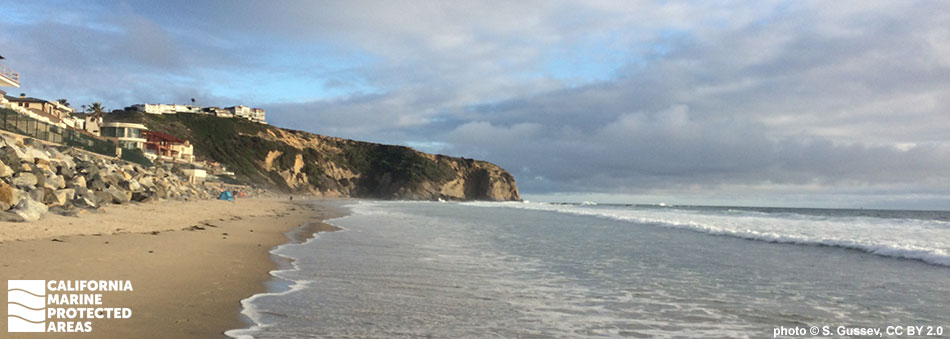
Overview
Dana Point State Marine Conservation Area (SMCA) is located about 20 miles south of Huntington Beach along Highway 1, nestled between South Laguna and Dana Point in Orange County. Its northern border abuts Laguna Beach SMCA (No-Take). Dana Point SMCA covers nearly four square miles of marine habitat from shore to depths of around 150 feet. Beachgoers, whale watchers, anglers, surfers and tidepoolers enjoy this spot regularly.
The coves, sandy beaches, rocky reefs, surfgrass beds, and kelp forests provide refuge for thriving California spiny lobster populations, many species of fish and birds, and rich tidepool communities. Scuba and free divers who venture beyond the waves can explore the giant kelp forests and may encounter California halibut, bright garibaldi or leopard sharks. Dolphins and sea lions are commonly seen from shore, where rocky tidepools expose vibrant marine life like scurrying crabs and the swaying tentacles of moonglow anemones.
Regulations
It is unlawful to injure, damage, take, or possess any living, geological, or cultural marine resource, EXCEPT:
Recreational take of finfish by hook-and-line or spearfishing, and lobster and urchin is allowed. Commercial take of lobster by trap, sea urchin, and coastal pelagic species (northern anchovy, Pacific sardine, Pacific mackerel, jack mackerel, and market squid) by round-haul net, brail gear, and light boat is allowed. Not more than five percent by weight of any commercial coastal pelagic species catch landed or possessed shall be other incidentally taken species. Take of living marine resources from tidepools is prohibited.
California Code of Regulations Title 14, Section 632(b)(136)(opens in new tab)
Quick Facts
MPA size: 3.47 square miles
Shoreline span: 4.0 miles
Depth range: 0 to 152 feet
Habitat composition*:
- Rock: 1.60 square miles
- Sand/mud: 2.82 square miles
*Habitat calculations are based on three-dimensional area and may exceed the total MPA area listed above.